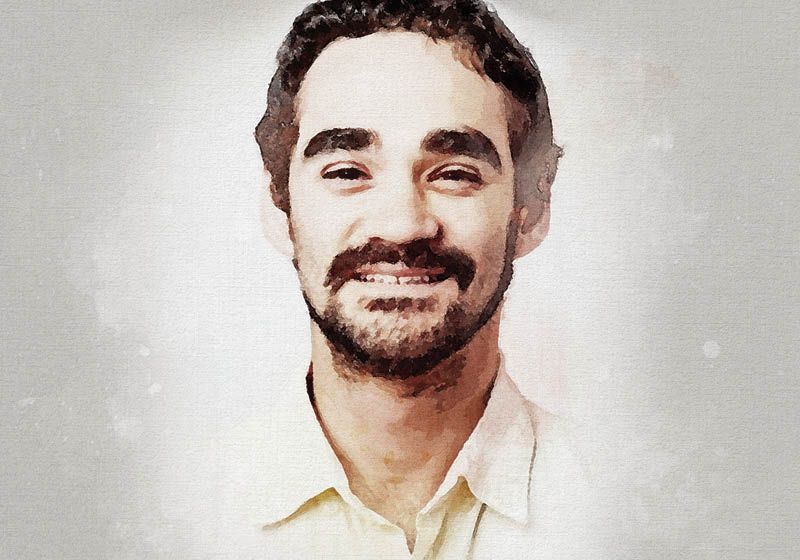This postdoc explores how protein interactions govern bacterial membranes, with potential pathways toward new antimicrobial therapies.
Q | Write a brief introduction to yourself including the lab you work in and your research background.
I am Thiago Pasin, a postdoctoral associate in Jeannine Brady’s Lab at the University of Florida (UF) College of Dentistry. I earned my master’s and PhD in Brazil studying fungal enzymes, followed by postdoctoral research in enzyme kinetics and structural biology at the University of Texas (UT) San Antonio. At UF, I study how nucleic acid-binding proteins and membrane proteins interact to organize and regulate Streptococcus mutans membrane composition, informing potential antimicrobial strategies.
Q | How did you first get interested in science and/or your field of research?
I grew up in Brazil, where my fascination with science began through microscopy and fungal enzymology. During my master’s and PhD, I produced and extracted enzymes from fungal strains for biomass recycling and other industrial processes, such as biofuel production and bioconversion of agricultural residues. This work provided hands on experience in enzyme production, purification, and application, and sparked my interest in studying protein function in complex systems.
This foundation led me to postdoctoral research at UT San Antonio, where I focused on enzyme kinetics and structural biology, developing new approaches to study microbial enzymes. Currently, I am investigating how nucleic acid-binding proteins regulate membrane proteins and other relevant genes in S. mutans. My research integrates molecular biology, structural biology, spectroscopy, and biophysical approaches to uncover how these interactions shape Gram-positive bacterial membranes and inform potential antimicrobial strategies.
Q | Tell us about your favorite research project you’re working on.
My favorite research project focuses on how nucleic acid-binding proteins assemble with YidC1 and YidC2, two essential components of the membrane protein insertion pathway in S. mutans. This bacterium is a major contributor to dental caries, yet the molecular mechanisms governing its membrane organization and protein translocation remain poorly understood.
We combine structural and biological approaches to study these interactions. Crystallography and NMR spectroscopy allow us to visualize complexes at high resolution, while pull-down and bacterial two-hybrid assays confirm protein interactions and reveal which complexes form in vivo. These experiments identify the interfaces mediating protein-protein interactions and demonstrate how these assemblies contribute to membrane architecture and function.
This project excites me because it combines fundamental and translational potential. While addressing core questions about bacterial membrane biology, our findings may inform novel antimicrobial strategies and bring us closer to a complete understanding of how these molecular machines operate in their native environment.
Q | What do you find most exciting about your research project?
The most exciting part of my scientific journey has been developing methods that open new ways to study complex biological systems. During my postdoctoral work at UT San Antonio, I created a highly sensitive, continuous fluorescence assay to measure the kinetics of enzymes producing methylthioadenosine, a key co-product in polyamine and metallophore biosynthesis. Designing, optimizing, and validating this assay was challenging but immensely rewarding. It advanced our research and provided a tool that other scientists could use. Seeing the method published in Methods in Enzymology was a highlight, demonstrating how technical innovation can impact the broader scientific community. Moments like this, when careful experimentation and persistence yield widely useful discoveries, are what make science most exciting for me.
Q | If you could be a laboratory instrument, which one would you be and why?
I would be an ÄKTA chromatography system. I admire its ability to carefully separate complex protein mixtures into individual components, revealing what’s hidden and valuable, much like how I approach biological problems to uncover mechanisms. ÄKTA is precise, reliable, and essential for purification, and I strive to bring the same accuracy and dependability to my work. I also appreciate how it guides researchers through complex processes efficiently, acting as both problem solver and facilitator, traits I value in science and collaboration. As an instrument, I would embrace the role of an ÄKTA system: meticulous, versatile, and dedicated to turning complex samples into clear, actionable insights.
Are you a researcher who would like to be featured in the “Postdoc Portraits” series? Send in your application here.

